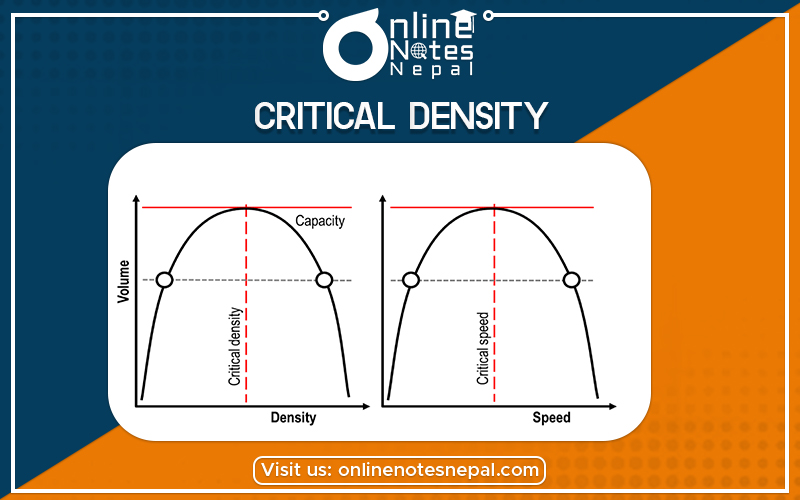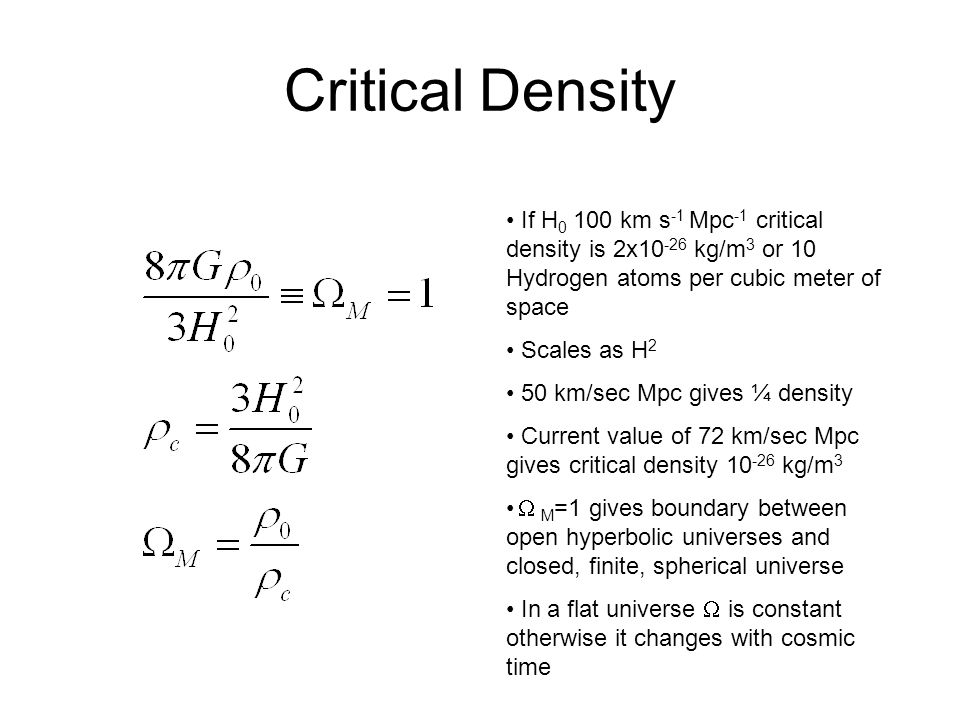Published by: Zaya
Published date: 26 Jun 2021

The critical density is the average density of matter required for the Universe to just halt its expansion, but only after an infinite time. A Universe with the critical density is said to be flat.
In his theory of general relativity, Einstein demonstrated that the gravitational effect of matter is to curve the surrounding space. In a Universe full of matter, both its overall geometry and its fate are controlled by the density of the matter within it.
If the density of matter in the Universe is high (a closed Universe), self-gravity slows the expansion until it halts, and ultimately re-collapses. In a closed Universe, locally parallel light rays converge at some extremely distant point. This is referred to as spherical geometry.
If the density of matter in the Universe is low (an open Universe), self-gravity is insufficient to stop the expansion, and the Universe continues to expand forever (albeit at an ever-decreasing rate). In an open Universe, locally parallel light rays ultimately diverge. This is referred to as hyperbolic geometry.
Balanced on a knife-edge between Universes with high and low densities of matter, there exists a Universe where parallel light rays remain parallel. This is referred to as a flat geometry, and the density is called the ‘critical density. In a critical density Universe, the expansion is halted only after an infinite time.

The three possible geometries for the Universe. In a Universe where the density of matter is high (closed Universe/spherical space), locally parallel light rays (blue lines) ultimately converge. In a Universe where the density of matter is low (open Universe/hyperbolic space), locally parallel light rays ultimately diverge. In a Universe where the density of matter is the flat space, locally parallel lines remain parallel.
The critical density for the Universe is approximately 10-26 kg/m3 (or 10 hydrogen atoms per cubic meter) and is given by:

where H is the Hubble constant and G is Newton’s gravitational constant.